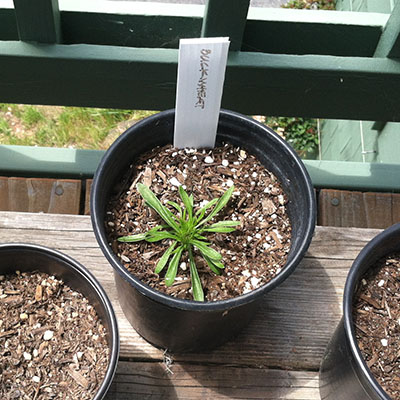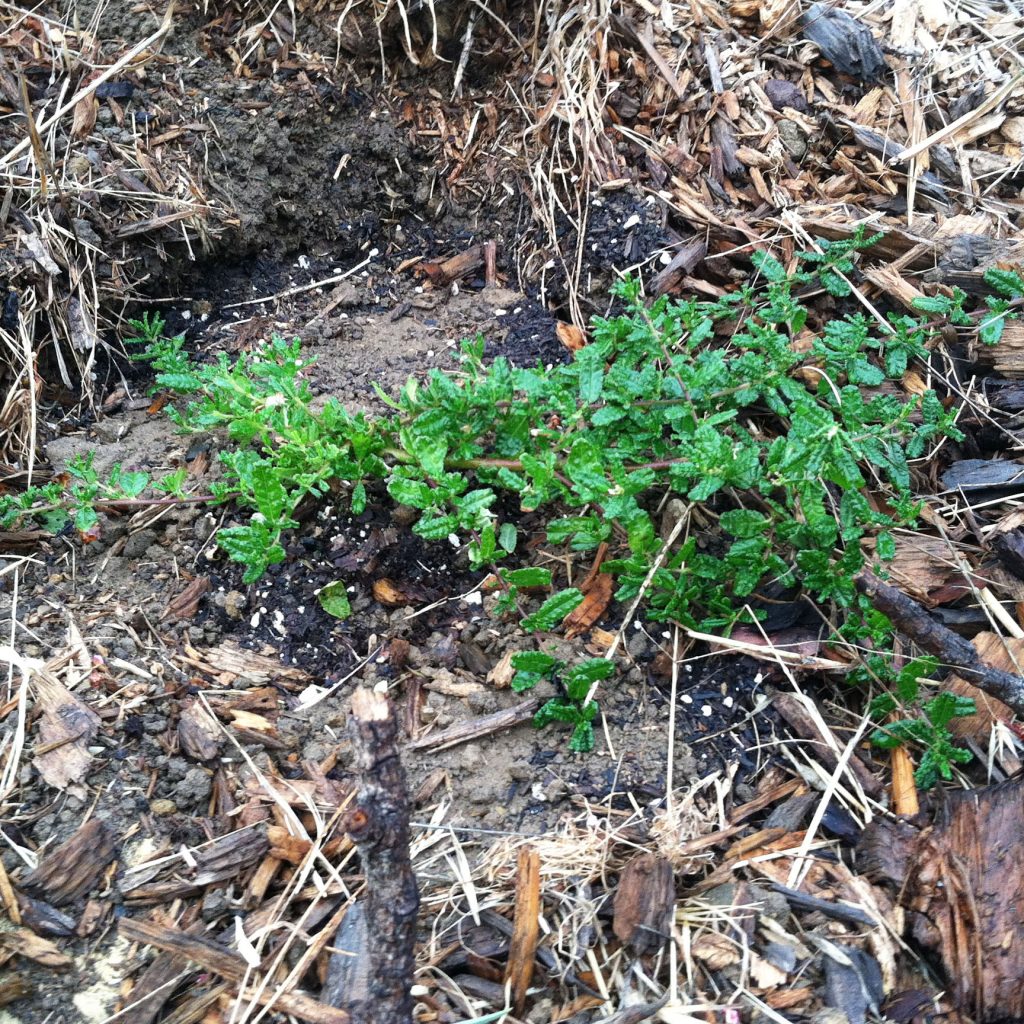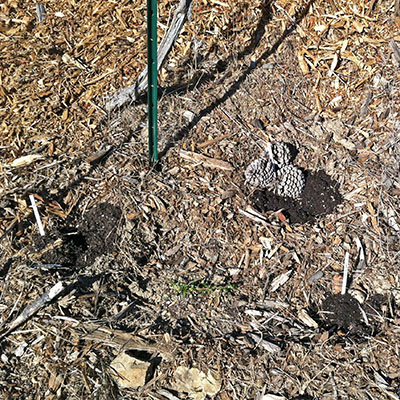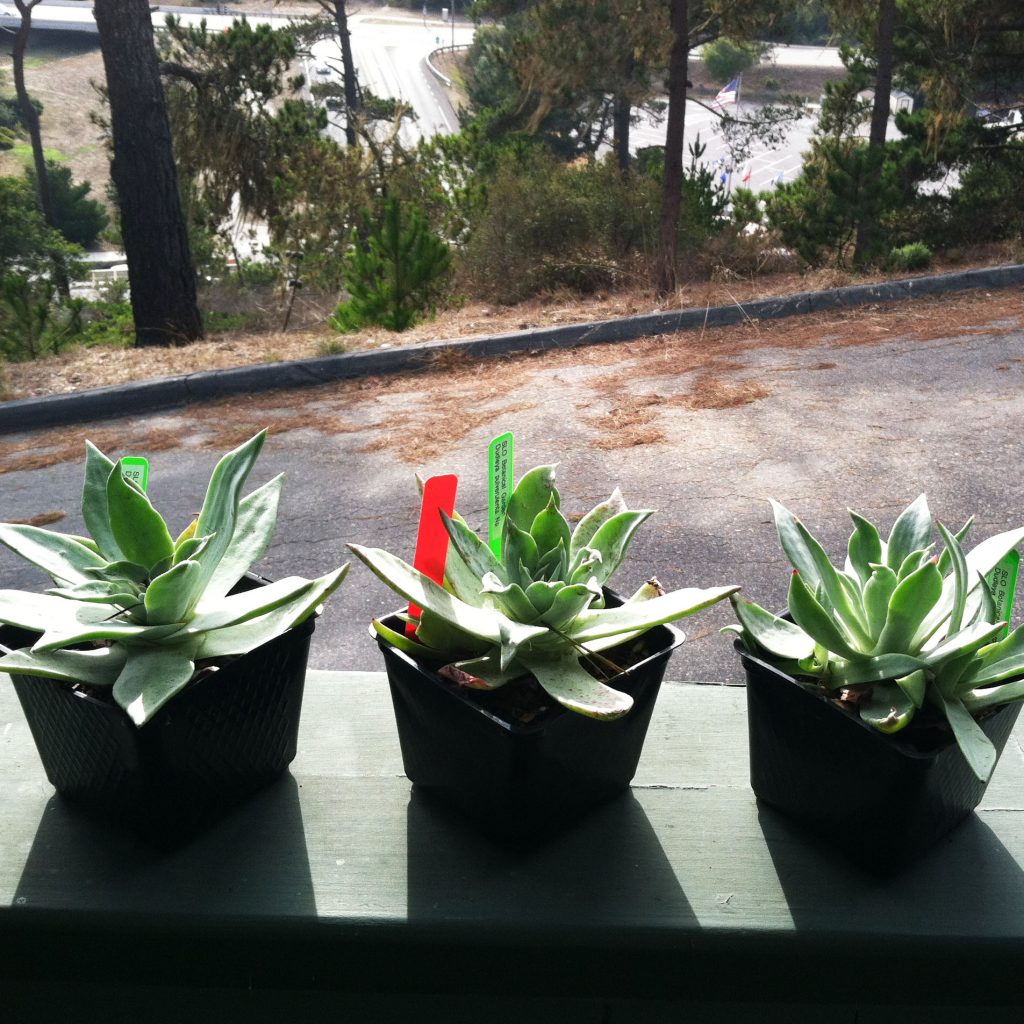This spring give the birds, bees, and butterflies places to live, dine, and hang out by adding native plants to your garden and making it a pesticide-free zone.
About two weeks ago, a newsletter from the California Native Plant Society (CNPS) arrived in my email inbox informing me that April 13-21 is Native Plant Week here in California.
I decided to use Native Plant Week as an opportunity to encourage other native plant novices, like me, to embrace native plants. When you give native plants a place in your yard or garden, you will attract native wildlife and signal to those who are just passing through that this is a good place to pause and take a break.
Ever since my spouse and I moved from Southern California to the Monterey pine forest of the California Central Coast about twelve years ago, we have been on a mission to restore our tiny piece of land. After years of invasive plant removal and spreading literally tons of wood chips to revive the parched soil, I realized I needed to learn about native plants.
I joined the CNPS chapter in San Luis Obispo. At my first meeting in October 2017, I met Marti and became interested in trying to grow native plants from seeds. You can meet the first plant I ever grew from a seed in the post, entitled Growing Native Plants from Seeds is Fun and if you are interested in the environmental benefits of native plants, I covered that topic in Native Plants are Good for the Environment.

The joy of growing native plants mostly occurs during the journey from seed to mature plant, but even the mishaps can be fun. My yard is mostly wild and your yard will be different from mine anyway, but perhaps you have had some similar experiences.
Native Plant Novice
To keep things simple I opted to experiment with growing native plant seeds using the tools and resources a non-expert might have on hand like a garden trowel, plastic pots from nursery plants, potting soil, a watering can, and something to use for plant markers. I planted my second batch of seeds in November 2018 without any special preparation.
This year I have been keeping a handwritten journal of what I observe happening with the seeds and a few small plants, we planted in our yard.
Becky the Buckwheat has a Birthday
I am one of those people who anthropomorphize animals and trees. It helps me connect with my non-human neighbors, but if you do not like it, I understand.
The very first plant I ever grew from seed was California buckwheat (Eriogonum fasciculatum). Out of a handful of seeds, it was the only one that germinated. After about nine months in a pot on the deck outside of our dining room, I decided that Becky was ready for the yard. Mindful of the deer that frequent our yard, I planted Becky in a small fenced-in section.

May 2018 
October 2018 
April 2019
I do not know Becky’s exact age, but I planted the seeds in January 2018 and the tiny seedling popped its head above the soil in March or April of that year. Becky went to live in the yard during October 2018 and now in April 2019, Becky is at least a year old and thriving.
Someone Stole My Daisies
For years, I have been admiring the lavender flowered seaside daisies (Erigeron glaucus) that grow on the Fiscalini Ranch Preserve near my house. Last November, when I spotted a variety of seaside daisies at the CNPS San Luis Obispo plant sale, I bought six small plants.
Because the daisies looked like potential deer food to me, they became Becky’s neighbors. The plants seemed happy and I could see them from a window in our stairwell. One day I looked out and sensed something was wrong so I went outside to investigate.
Four of the six plants were completely gone (not eaten) disappeared. It was the voles. I could tell by the little holes backfilled with loose dirt. The voles would not come out to discuss the situation so I can only surmise that seaside daisies are much sought after as bedding material or food for voles.

November 2018 
January 2019 
April 2019
That afternoon I dashed over to the local nursery to purchase some flexible mesh gopher cages. My spouse helped me dig up the two remaining plants and replant their roots inside the cages. That ended the carnage. The plants made it through the winter but I would say they look more as if they are just surviving versus thriving.
Plant Hide-and-Seek
In November 2018, feeling extra ambitious I expanded the number of varieties of seeds I would attempt to grow and decided to carefully plant a few in my yard along with a couple of plants that I had purchased at the San Luis Obispo Botanical Garden plant sale in October.
I carefully weeded a five-foot circle, planted a small Hearst ceanothus (Ceanothus hearstiorum) and three groupings of seeds marked with plant markers I made from an old sign.

October 2018 
A few days later 
April 2019
The deer or someone was probably laughing as I did this. Within days, the ceanothus had been eaten down to a nub, so we fenced in the area. Months later, the wild grasses took over and any tiny seedlings trying to make a go of it have either been outcompeted, eaten as soon as they popped up their heads, or are in there somewhere that I just cannot see.
Group Insurance
In the past, I have often purchased one plant to try out in a particular area. Last fall, I thought maybe it would be helpful to plant two or three of the same type of plant in the same area.
At the November CNPS plant sale, along with the ill-fated seaside daisies, I purchased six tiny California fuchsia (Epilobium canum) seedlings grown by Clearwater Color Wholesale Nursery in Los Osos. The plants were about 3” tall when I planted them in pots and set them outside our dining room window.
They seemed happy and grew steadily. After the seedlings reached about 6” tall, I decided they might enjoy going to live in the yard.
Unsure about whether deer have a taste for California fuchsia or not, I decided to plant one plant and see what happened. The deer completely ignored it for a couple of weeks so I decided it was safe to plant the others.

Yard February 2019 
Yard April 2019 
Insurance February 2019
Outside our office window, we have a grouping of three and a grouping of two. I planted the remaining plant near the seaside daisies as an insurance measure in case the deer suddenly develop a taste for California fuchsia.
Getting a Grip
The native plant enthusiasts I meet in our county seem enamored with dudleyas so I purchased three chalk
I read up about them on Calscape, an online California native plant resource guide, and learned that dudleyas like to be planted at an angle so moisture does not pool around them and they enjoy living with rocks.

October 2018 
October 2018 
April 2019
We have a small rocky section next to our driveway so I planted the three dudleyas in a triangle and hoped for the best. Periodically, I hand weed around them and they seem to be well established now.
My action for California Native Plant Week was to write this post. I hope you enjoyed the above plant stories and laughed at least once. Now, it is your turn to take action.
California Native Plant Week Actions
- Share your own native plant stories and/or expertise.
- Learn about native plants by going on a native plant garden tour or visiting a botanical garden.
- Sign up for a native plant walk in your area.
- Locate a nursery that sells native plants, pick one to try, and plant three of them in your yard or garden.
- Join your local native plant society. The American Horticulture Society lists every state on their website.
“Native plants are the foundation of ecosystems, supporting pollinators, birds, and the natural resources we all need for survival.”
Liv O’Keeffe, California Native Plant Society
Featured Image at Top: I think these are elegant clarkias (Clarkia unguiculata) plants that sprouted from seeds I scattered in the yard.
Related Posts
- Adopt a Native Plant
- All are Welcome at Our Birdbath
- A Sand County Almanac – Book Review
- Growing Native Plants from Seeds is Fun (resources and book list)
- GMOs and Bioengineered Food – Pesticide Proliferation
- Life after Cancer – Gardening
- Making Water Conservation a Way of Life – Outdoors
- Mother Nature Needs Our Help – Let’s Plant Trees
- Native Plants are Good for the Environment
- The American Lawn – Our Obsession with Turf Grass
- Weed Whacking – Do It Yourself
- Your Community Parks, Open Spaces, and Gardens Need You
Resources
- California Native Plant Society Bulletin Vol 41/NO 1 January-March 2011 (history of CA Native Plant Week)
- California Native Plant Week Assembly Concurrent Resolution No. 173 – California Legislative Information
- Native Plant Societies – American Horticultural Society (U.S. and Canada)

